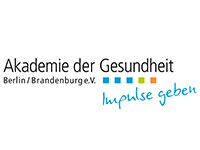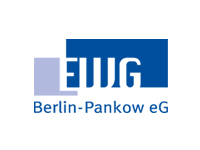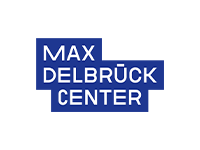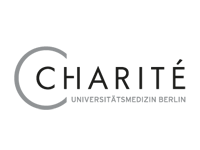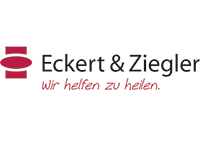Your selection
/ 31.03.2025
Unraveling cell polarity with the help of AI
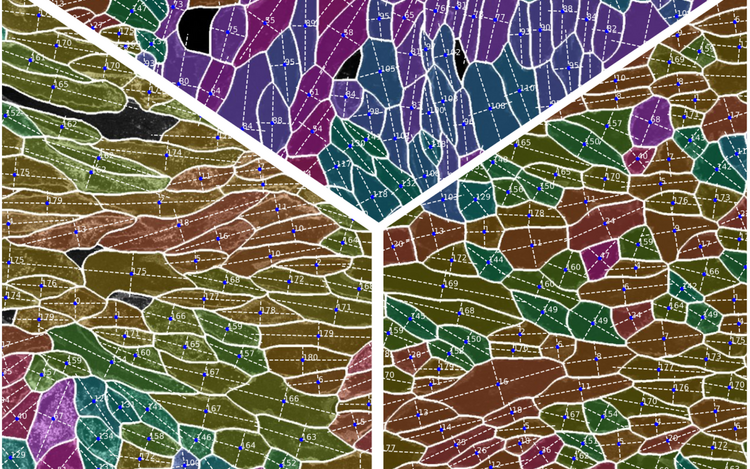
Max Delbrück Center and Helmholtz Imaging scientists have developed open-source software that simplifies the study of cell polarity with fluorescence microscopy. Published in “Nature Communications,” the innovation may streamline research on many basic biological processes such as tissue repair.
At first glance, the human body may appear symmetrical. But a closer look might reveal many asymmetries – a crooked smile, or a foot larger than the other. On a microscopic level, our cells too are not uniform, but rather show cell polarity – an asymmetry in their shape, structure or the organization of their cellular components. Studying cell polarity with florescence microscopy can yield clues about health and disease. But turning microscopy data into knowledge has been hampered by the incompatibility of existing tools.
In a study led by Dr. Wolfgang Giese in the Integrative Vascular Biology lab of Professor Holger Gerhardt at the Max Delbrück Center and Jan Philip Albrecht, a computer scientist working with Deborah Schmidt (Image Data Analysis platform) at Helmholtz Imaging, researchers introduce Polarity-JaM – an open-source, freely available and user-friendly tool to analyze cell polarity data from fluorescence microscopy images. The study was published in “Nature Communications.”
“We wanted to create a tool that enables scientists, including those with minimal programming experience, to explore and analyze cell polarity data in a straightforward and reproducible way,” says Giese. “By integrating circular statistics and user-friendly visualization, Polarity-JaM helps researchers uncover patterns in cell behavior that were previously difficult to analyze quantitatively.”
Addressing a challenge in cell image analysis
Researchers study cell polarity to better understand processes such as tissue repair, organ development and immune responses. But despite advances in fluorescence microscopy that have made it easy to capture detailed images of cell polarity, tools to analyze the data remain fragmented, time-consuming, or require specialized coding skills. This makes large-scale, reproducible research nearly impossible.
Polarity-JaM combines analyses of cell polarity, morphology, and cell-cell contact formation among other features into a single, holistic software package that takes advantage of deep learning.
The tool quantifies and helps to visualize multiple aspects of cell polarity, including the position of Golgi organelles with respect to cell nuclei, cell shape and orientation, and the location of cellular organelles, to name just a few examples. To demonstrate the tool’s capabilities, the researchers showed that they could study how endothelial cells alter their shape, orientation, and signaling responses when exposed to different shear stresses – conditions that mimic blood flow.
Understanding cell polarity can help to explain how the body maintains healthy organs and tissues and what goes wrong in diseases like cancer, cardiovascular disorders, and inflammation, says Gerhardt. “The ability of machine learning-based segmentation tools to accurately identify and outline cells within a microscopic image almost as well as a human expert exceeded our expectations,” he adds. “It demonstrates the potential for further automation in biological research and beyond, freeing up scientists to focus on higher-level analysis and discovery.”
An open-source solution
The researchers have made Polarity-JaM documentation and tutorials available at https://polarityjam.readthedocs.io. The site includes a how-to video, ensuring that users can easily learn and apply the tool to their research. In addition, a web-based application hosted at www.polarityjam.com enables researchers to perform circular statistical analyses – which involves analyzing data that is circular in nature such as angles or the orientation of cellular structures in 3D space – and visualize their data without requiring users to install software, making the tool accessible to a broader audience.
“The open-source nature of Polarity-JaM allows researchers, developers, and the wider scientific community to contribute, improve, and expand its capabilities, ensuring continuous development and adaptation to new research challenges,” says Albrecht. The team is now looking to expand the capabilities of PolarityJaM to be able to analyze 3D tissue and organoid models, for example. They also hope to include analyses of other subcellular structures, time lapse imaging and dynamic tracking to study how cell polarity evolves over time, and to add other features as well.
Figure: The image shows how cell polarity changes when endothelial cells are exposed to different shear stress parameters – conditions which mimic blood flow. © Julia Kraxner, Emir Akmeric (Gerhardt Lab), Jan Philipp Albrecht (Helmholtz Imaging)
Overview News
News Buch Berlin
Unraveling cell polarity with the help of AI
Max Delbrück Center and Helmholtz Imaging scientists have developed open-source software that simplifies the study of cell polarity with fluorescence microscopy. Published in “Nature Communications,” ...
more ...Curious minds at UniStem Day 2025
Around 220 high school students from across Berlin came to the conference center of the Max Delbrück Center in Buch in mid-March with one topic on their minds: stem cell research. For the tenth time, ...
more ...Eckert & Ziegler: Record year 2024 with new all-time highs
Eckert & Ziegler SE (ISIN DE0005659700, TecDAX) achieved a new record in the 2024 financial year with sales of € 295.8 million based on the preliminary annual financial statements*. Compared to the pr...
more ...Events Buch Berlin
03.04.2025, 08:30
Von Technik bis OP: Berufe im Helios Klinikum Berlin-Buch am Girls‘ Day hautnah erleben
Du erhältst die Möglichkeit dich über die Berufsbilder zu informieren, im Rahmen eines Rundgangs durch unser Klinikum verschiedene Stationen kennenzulernen und bei einer Rallye dein Können unter Bewei...
more ...03.04.2025, 09:15
Girls‘ Day am Max Delbrück Center : "IT Girls in der Biomedizin - Was macht eine Informatikerin in der Gesundheitsforschung?"
Wir nehmen Euch für einen Tag mit in unsere Labore! Unsere Azubis, Forscherinnen und IT-Fachfrauen zeigen Euch ihren Berufsalltag und erzählen Euch warum sie ihren Beruf gewählt haben, wie ihr Weg dah...
more ...05.04.2025, 18:00
Konzert world music: Swing mit Fuchs von Zimmer
präsentiert von Kulturkreis Phoenix
more ...